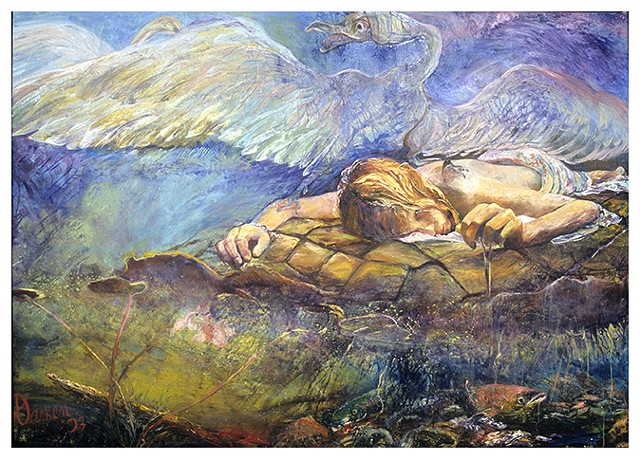Leda & the Angry Swan-Oils
Bettany Hughes, a cultural and social historian writes,
“…early representations of this story are relatively tame, the bird small, with Leda simply petting him. But as time goes on, the bird grows bigger, the atmosphere more violent.” In Argos, a tombstone commissioned by a rich Greek merchant immortalizes the moment when the swan enters the young woman. (She) is doubled over- in pain or in ecstasy…”
Is she trying to drag Zeus out of herself or help him in? The ambiguity of the violent deed underscores the male’s rationalization. During the 15th and 16th centuries depictions of the myth seem to convey Leda’s complicity and enjoyment. Leonardo da Vinci’s drawings show a Leda who is naked yet beautifully coiffed; entwined with a sensually benign swan and Michelangelo’s Leda “…seems to be abandoned to sensual pleasure…”
The myth’s recasting images, whether pruriently imagined or disguised as “divine” sensual rapture, are from a male perspective. One of my goals when painting Leda and the Angry Swan was to make “Leda’s eye” the focus of the painting. The viewer cannot escape her gaze and the window to her soul. She is overpowered, not subdued. This Swan–Zeus is not a loving “divine spirit”, but rather a territorial, aggressive being.
Hughes, Bettany. Helen of Troy: Goddess, Princess, Whore (New York: Alfred A. Knopf, 2005), p.23.
